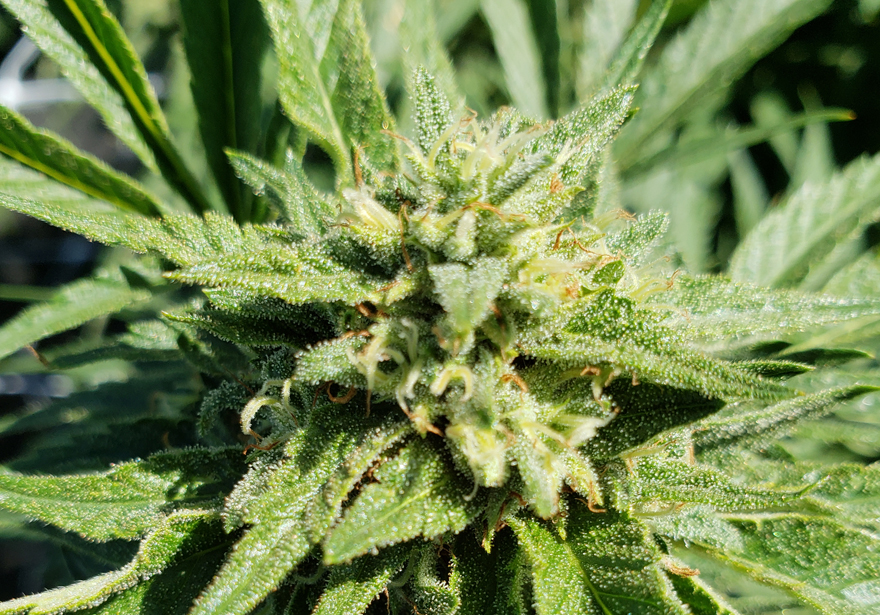There are a mind boggling array of Cannabis products on the market today. A clear majority deal with the most profitable intoxicating and beneficial oils. Historically however, the hemp plant has long been used for nutritional, pharmaceutical, industrial uses.
From gruel porridge made of crushed hemp seed to terpene rich superfoods of today – the health value of Cannabis is boldly evident. Not to be forgotten – the debt civilization owes to the simple hemp fiber. There are indeed many uses for this complete plant and it’s myriad of components.
Here is a listing of the plant parts. Each component has a variety of products that can be made. This, of course, is just a humble sampling of the many products that can be derived from Cannabis.
Seed
Hemp seed has a long history with humanity. As food, hemp seed hearts are excellent protein source. Regarded as a way to feed the masses, gruel from hemp seed was a standard for centuries. Today modern techniques are able to turn hemp into a wide variety of food. A company in Colorado is now even producing hemp seed burgers.
Benefits from hemp seed are for both internal and external health. Omega-3 fatty acids aid in nutrition and there are proven skin benefits from lotions made of hemp seed oil.
Hemp seed oil from cold pressing has many industrial applications. Soaps, carrier oils and biodiesel production are all a possible product of hemp seed oil. Hemp oil is even used as an engine lubricant.
Leaf
Known for it’s nutritional value, new insights on the raw leaf of Cannabis are being found. Out of all the novel applications the most common method for leaves is juicing. Juiced leaf, unique in flavor, has antioxidant applications. Beneficial phytochemical compounds in leaves as well as other compounds such as CBDA are also present. Most growers throw away the leaves. Juicing is another resource. This is especially true to those where THC is not an option but the consumer still would like to have their cannabinoids. Smaller ‘sugar leaves’ heavy with oil rich glands called trichromes will have higher cannabinoid content while the larger fan leaves with few trichromes will have higher phytochemcial ratio.
Composting the leaves for soil enrichment is a common option. Bio-fuel production is an interesting possibility as well as fiber utilization from the leaves.
Root
Roots of the Cannabis plant can be boiled into a tea, but have mainly been used throughout history for healing wounds. Known for anti-inflammatory activity, the applications for roots have yet to be explored fully. References from past cultures on the usefulness of hemp root are not being overlooked. Now, the fibers and root tissue are undergoing research regarding medical applications.
Industrial applications of using hemp root as a filter material or as fiber replacement are showing promise because of the durability and renewable nature of the fiber.
The best techniques for harvesting and processing roots are using hydroponics. With media-free “water culture” growing, the roots are clean and are immediately ready.
Flower
Most profitable, the female flower, known as as ganja or “bud” is where cannabinoid compounds are concentrated in the oil rich trichromes. The drying and curing of flower is critical to processing. The basic idea for curing is to blanch out the chlorophyll in a dark environment while slowly drying. Oil rich trichromes on flower buds do best with a long, slow cure. However, it is but one of many promising components of the Cannabis flower.
For some pharmaceutical edibles the ganja is exposed to moderate temperature step known as decarboxylation. The vaporization of Carbon and Oxygen from the acid derivation of THC makes ingested THC pass through the blood / brain barrier, bypassing the liver and giving a faster effect. Unfortunately, many volatile aromatic terpenes can be lost in the moderately high temperature needed for decarboxylation. Raw flower, on the other hand, can be used to keep a terpene profile rich. Juiced as with the leaves or served raw as salad, green bud can be a source of phytochemicals as well as full of flavorful terpene aroma.
Stem
The humble hemp fiber from the stem of Cannabis holds few equals in history. Most likely the determining factor in many a civilization if not personal livelihood of everyone before the advent of synthetic fibers. Throughout World War Two, the use of hemp was a standard. The industrial properties of Cannabis is interwoven in the canvas of history. Even the word canvas has it’s derivation from Cannabis. Modern processing of this fiber is similar to ancient days. Stems are soaked in water then drawn out over spikes to separate out individual strands. The fiber strands then can be woven into rope, form textiles, fiberglass, or even be mixed with concrete to make hempcrete. Not very edible, but definitely handy.
The Plant
Bioremediation of soils for ecological improvement has been long demonstrated. Plants have been shown to clean up polluted soils. Cannabis with it’s tenacious growth and ability to flourish where other cultivated crops fail, stands as the leading contender to clean up areas previously damaged. A defining goal for many – creating arable land from polluted wasteland.
The entire Cannabis plant can be utilized with minimal processing. There are many more products available and new techniques will arise as our collective experience grows. As it now stands, the evident history and empirical data on Cannabis shows the value beyond just a single product. Society’s paradigm shift to a positive attitude regarding Cannabis is solid footing civilizations have used in the past, pointing us to a vast and fruitful future.
By Professor Dale J. Chamberlain
Professor Dale J. Chamberlain is a botanist and bio-engineer who worked for NASA, and is now an author and Dean of The High Altitude School of Hydroponics (HASH) in Colorado.
